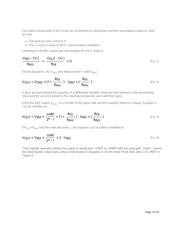herunterladen

Keywords: unipolar, DAC, bipolar, analog IC, op amp, voltage reference, Kirchhoff current law, resistor
matching, tolerance, temperature coefficient, offset, gain error, INL, DNL, calibrate, feedback, single supply
APPLICATION NOTE 5581
CHALLENGE THE CONVENTIONAL - MAKE
UNIPOLAR DACS BIPOLAR
By: Yuriy Kurtsevoy, Strategic Applications Engineer
Abstract: This application note investigates how to convert a unipolar digital-to-analog converter (DAC) for
use in bipolar applications. Calculations are provided to show the conversion for an ideal unipolar DAC
through the addition of a precision voltage reference and a precision op amp. Real-world conversion is
illustrated with discussions on how to choose needed resistors, a voltage reference, and an op amp as well
as the parameters to consider.
A similar version of this article was published March 3, 2014 in EE Herald.
Introduction
The trend in analog ICs is toward single-supply digital-to-analog converters (DACs). A DAC with only a
positive 5V supply is convenient, but it limits the available applications to those not requiring high-voltage,
high-current, or bipolar (±) outputs. In this application note, we illustrate how an external operational
amplifier can transform a unipolar DAC to provide bipolar operation.
Take the Unconventional Route
The expression “up the down staircase” comes from a movie, a play, and a book by the same name. It is a
comedy based on a school in New York City. The title recalls a rule that penalized students for going up the
staircase reserved for coming down. It is always a great temptation for a youngster to run up stairs, or
escalators (Figure 1), that are going down. Some might say that the child is “thinking outside the box” or
breaking the rules, and perhaps he is. Clearly, he is challenging the expected or mandated flow, the
common thinking. He also shows how with some daring, a goal can be attained by an unconventional route.
There is a lesson here for us engineers.
1
Page 1 of 10
Verzeichnis
- ・ Technische Daten on Seite 9
- ・ Anwendungsbereich on Seite 1








